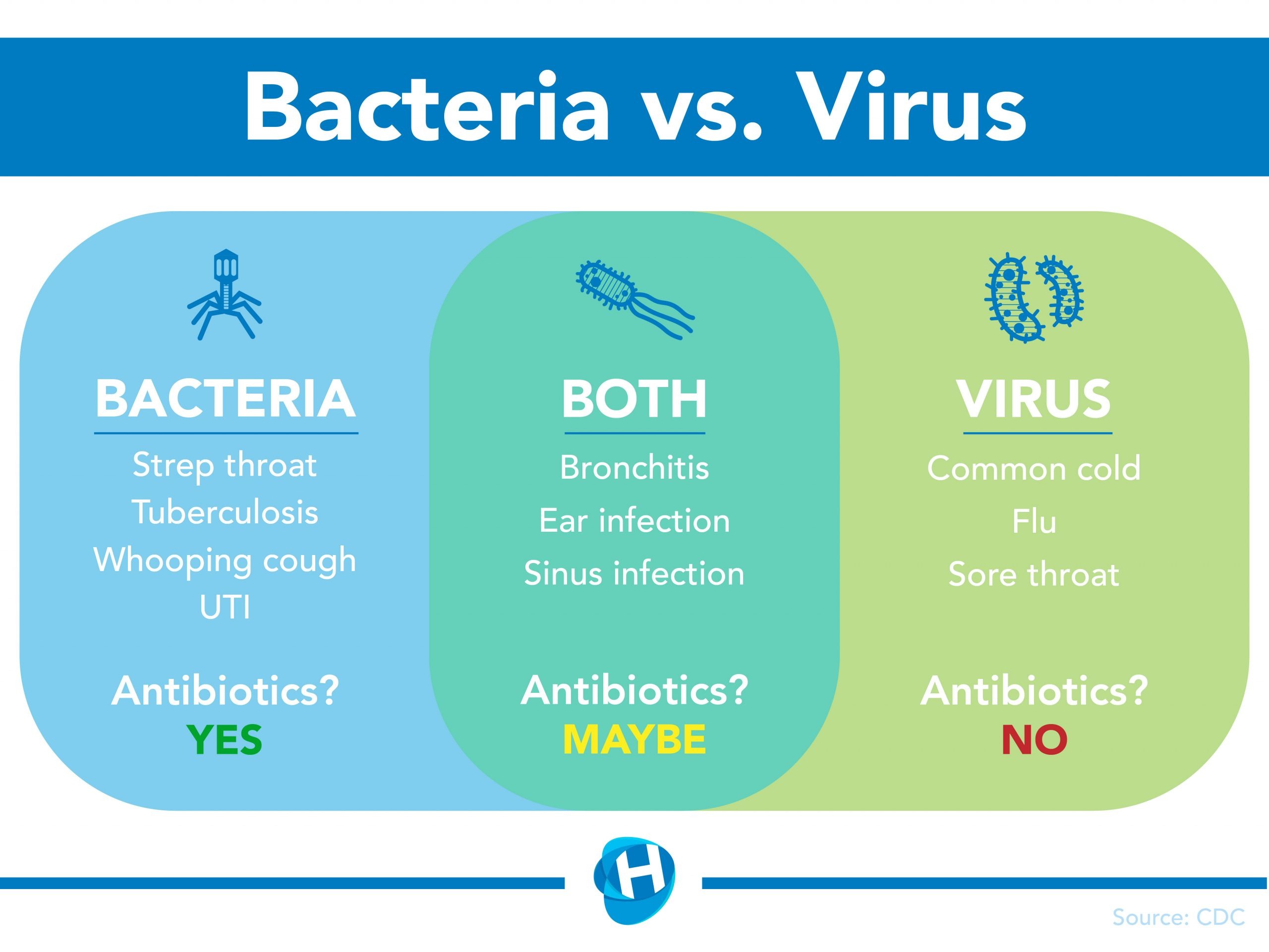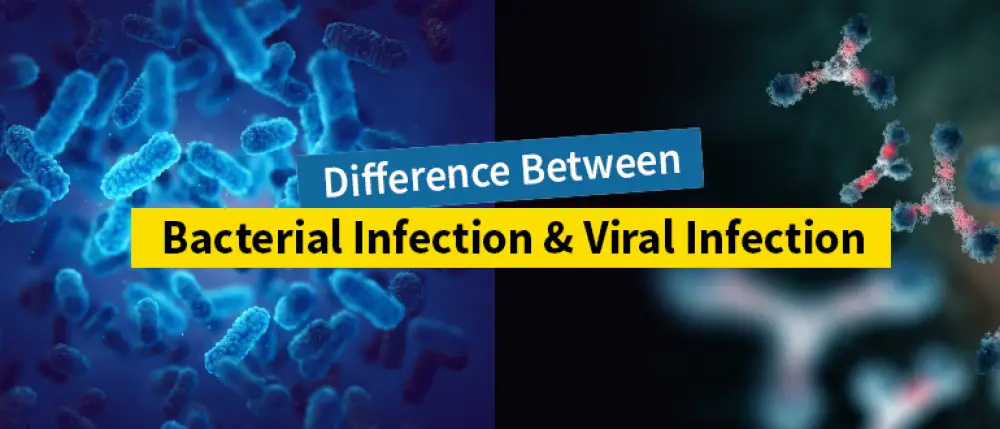Bacterial and viral infections are two of the most common causes of illnesses, yet they differ significantly in their origins, symptoms, and treatments. Understanding these differences is crucial for effective management and recovery. While both types of infections can cause fever, fatigue, and other symptoms, their underlying causes and treatment methods vary. Misdiagnosis or improper use of medications, like antibiotics, can lead to complications or resistance issues.
In this guide, we will explore the distinctions between bacterial and viral infections, outline the symptoms of each, and discuss appropriate treatment options to help you stay informed and make better healthcare decisions.
What Are Bacterial Infections?
:max_bytes(150000):strip_icc()/what-is-a-bacterial-infection-7705652_final-2f1b8b2429b2495c8333b584512d3afa.jpg)
Causes and Characteristics
Bacterial infections are caused by harmful bacteria that invade the body and multiply. While many bacteria are harmless or beneficial (like those in the gut), pathogenic bacteria can cause illness. These microorganisms are typically single-celled organisms and thrive in various environments, including inside the human body.
Symptoms of Bacterial Infections
Common symptoms vary depending on the type of bacteria and infection site but may include:
- High fever
- Localized redness, swelling, or pain
- Pus-filled sores or abscesses
- Persistent cough or sinus pressure (as in pneumonia or sinusitis)
Bacterial infections often present localized symptoms, such as a sore throat in strep throat or urinary discomfort in urinary tract infections (UTIs).
Treatments for Bacterial Infections
Antibiotics are the primary treatment for bacterial infections. These medications work by targeting specific bacterial structures or functions, such as cell walls or protein synthesis. However, misuse of antibiotics can lead to resistance, making infections harder to treat. Always follow your healthcare provider’s advice and complete prescribed courses of antibiotics.
Understanding Viral Infections

Causes and Nature
Viral infections are caused by viruses, smaller and simpler organisms compared to bacteria. Viruses rely on host cells to reproduce, often damaging or killing the cells in the process. Unlike bacteria, viruses cannot survive or multiply outside a living host.
Symptoms of Viral Infections
Symptoms often involve the whole body and include:
- Fatigue and malaise
- Body aches
- Low-grade or fluctuating fever
- Cough, congestion, or a runny nose (as seen in the common cold or flu)
Viral illnesses like the flu or common cold usually resolve on their own as the immune system fights off the infection. However, some viruses, such as HIV or hepatitis, require long-term management.
Treatments for Viral Infections
Antibiotics are ineffective against viruses. Instead, antiviral medications may be prescribed for severe or chronic infections, such as influenza or herpes. For most viral illnesses, supportive care—such as hydration, rest, and over-the-counter medications to relieve symptoms—is the mainstay of treatment. Vaccines are a powerful preventive tool, helping the body build immunity to specific viruses.
Key Differences Between Bacterial and Viral Infections

Structure and Function
- Bacteria: Living, single-celled organisms with complex structures that allow them to survive independently.
- Viruses: Non-living infectious agents that require a host cell to replicate.
Symptom Patterns
- Bacterial infections: Often localized, such as a specific area of redness or pain.
- Viral infections: More generalized symptoms, affecting the entire body.
Treatment Options
- Bacteria: Respond to antibiotics but may require culture tests to identify the most effective drug.
- Viruses: Managed with antiviral drugs or supportive care; prevention through vaccines is key.
Understanding these differences helps healthcare providers make accurate diagnoses and recommend appropriate treatments.
Why Misdiagnosis Matters

Incorrectly identifying an infection as bacterial when it’s viral—or vice versa—can have serious consequences.
- Overuse of Antibiotics: Prescribing antibiotics for viral illnesses contributes to antibiotic resistance, making bacterial infections harder to treat.
- Delayed Recovery: Misdiagnosis may delay effective treatment, prolonging symptoms or leading to complications.
- Public Health Concerns: Inappropriate treatment choices can increase the spread of resistant bacterial strains or outbreaks of preventable viral diseases.
Always consult a healthcare provider for an accurate diagnosis and follow recommended treatments. Laboratory tests, such as blood work or throat swabs, can help distinguish between bacterial and viral causes.
Preventive Measures

General Hygiene Practices
- Wash hands frequently with soap and water.
- Avoid touching your face, especially your mouth, nose, and eyes.
- Disinfect high-touch surfaces, such as door handles and electronics.
Vaccination
Vaccines are highly effective in preventing viral illnesses like the flu, measles, and hepatitis. For bacterial diseases like tetanus and pneumococcal infections, vaccines also offer strong protection.
Healthy Lifestyle
A strong immune system reduces the risk of both bacterial and viral infections. Regular exercise, a balanced diet, adequate sleep, and stress management all contribute to better immune health.
Stay Informed and Stay Healthy
Recognizing the differences between bacterial and viral infections is essential for effective treatment and prevention. By understanding how these infections develop and spread, you can make informed choices about when to seek medical care and how to manage symptoms.
Have you encountered challenges distinguishing between bacterial and viral illnesses? Share your experiences and tips in the comments below! For more health insights and practical advice, explore our website and subscribe to our newsletter. Let’s work together to build a healthier, more informed community!

Leave a Reply